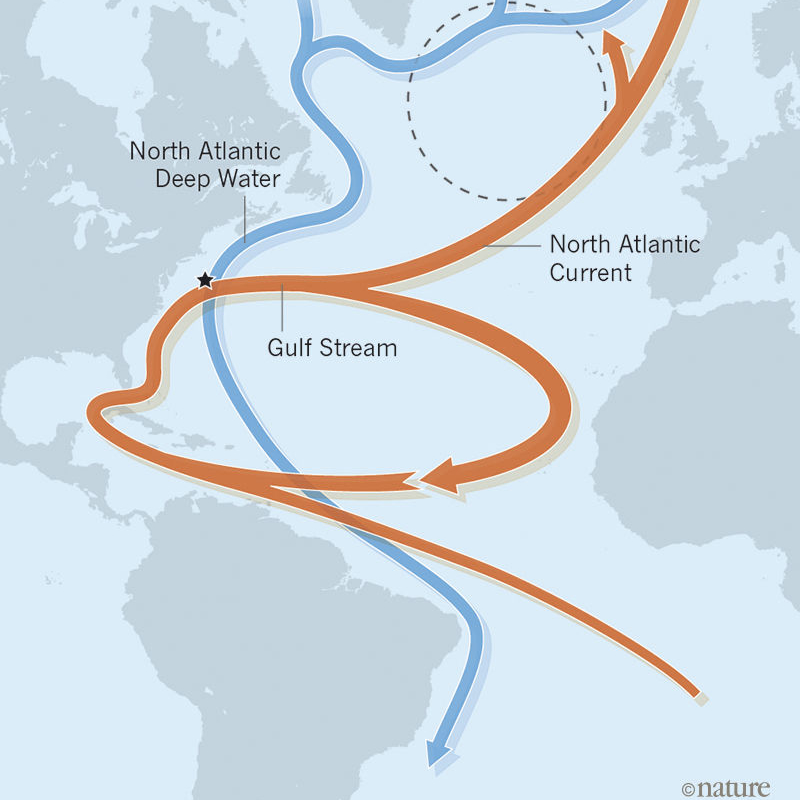BSC researcher Pablo Ortega is coauthor of the paper published in the April 12th issue of Nature.
New research led by University College London (UCL) and Woods Hole Oceanographic Institution (WHOI) provides evidence that a key cog in the global ocean circulation system hasn’t been running at peak strength since the mid-1800s and is currently at its weakest point in the past 1,600 years. If the system continues to weaken, it could disrupt weather patterns from the United States and Europe to the African Sahel, and cause more rapid increase in sea level on the U.S. East Coast.
When it comes to regulating global climate, the circulation of the Atlantic Ocean plays a key role. The constantly moving system of deep-water circulation, sometimes referred to as the Global Ocean Conveyor Belt, sends warm, salty Gulf Stream water to the North Atlantic where it releases heat to the atmosphere and warms Western Europe. The cooler water then sinks to great depths and travels all the way to Antarctica and eventually circulates back up to the Gulf Stream.
“Our study provides the first comprehensive analysis of ocean-based sediment records, demonstrating that this weakening of the Atlantic’s overturning began near the end of the Little Ice Age, a centuries-long cold period that lasted until about 1850,” said Dr. Delia Oppo, a senior scientist with WHOI and co-author of the study which was published in the April 12th issue of Nature.
“This interpretation of our paleoclimatic records was supported by the analysis of two state-of-the art climate models, thus setting a good example about how to exploit natural archives and climate models together” adds Pablo Ortega, another co-author of the study currently working at the Barcelona Supercomputing Center (BSC).
Read press release here.
Read article here.
* Caption: Illustrative figure of the Atlantic Ocean circulation (from Praetorius 2018, Nature)

